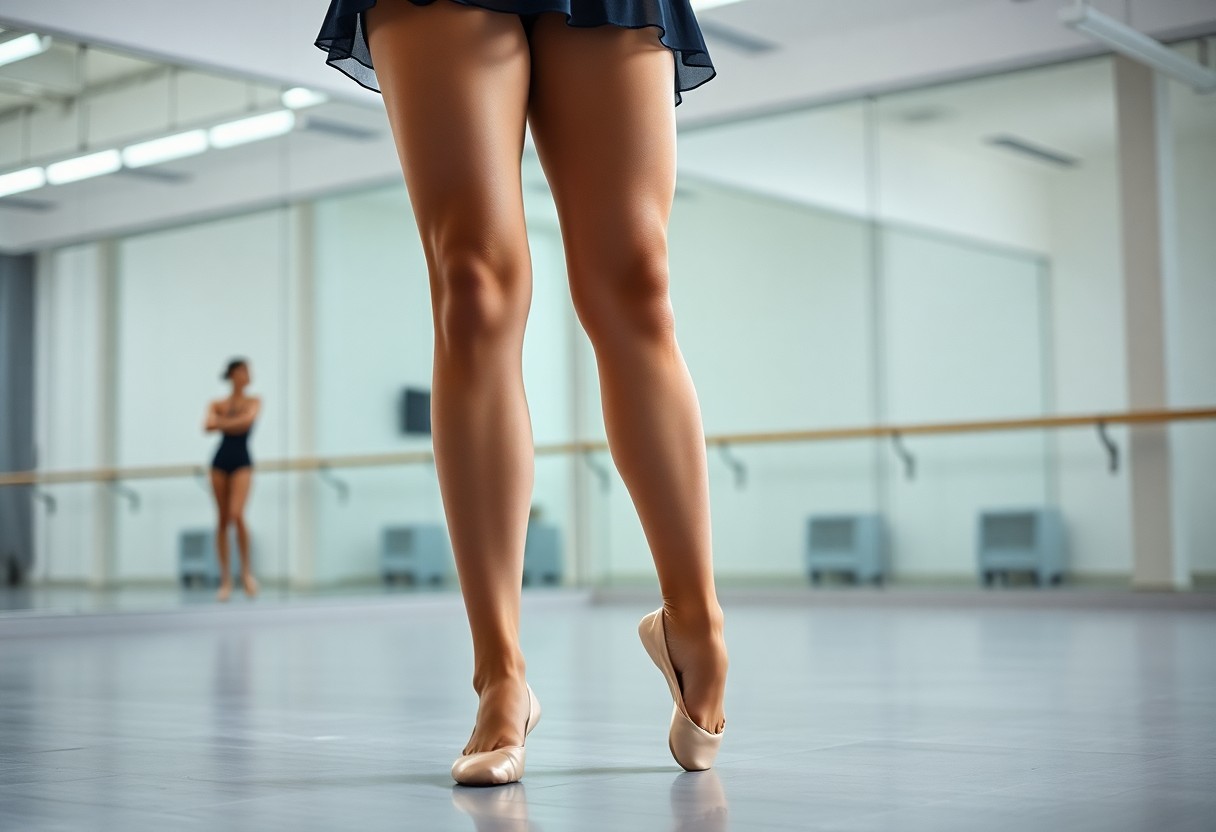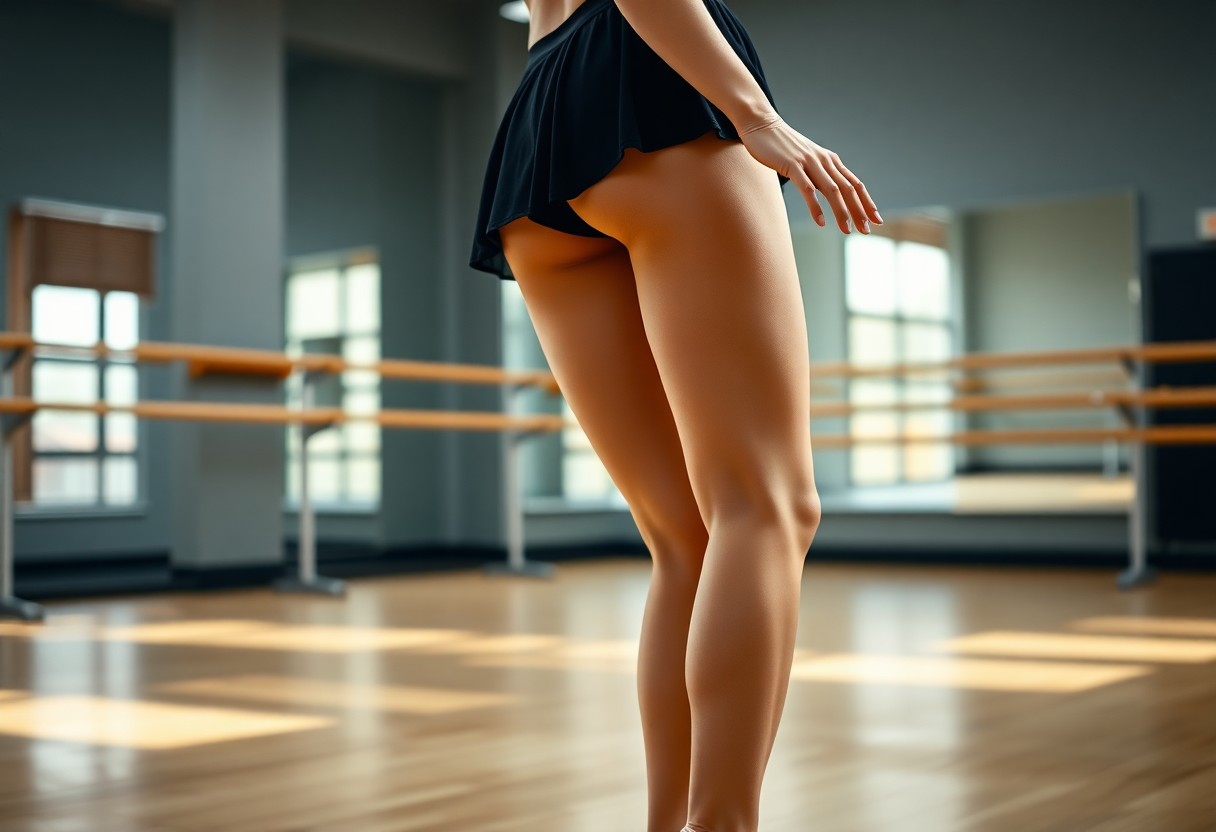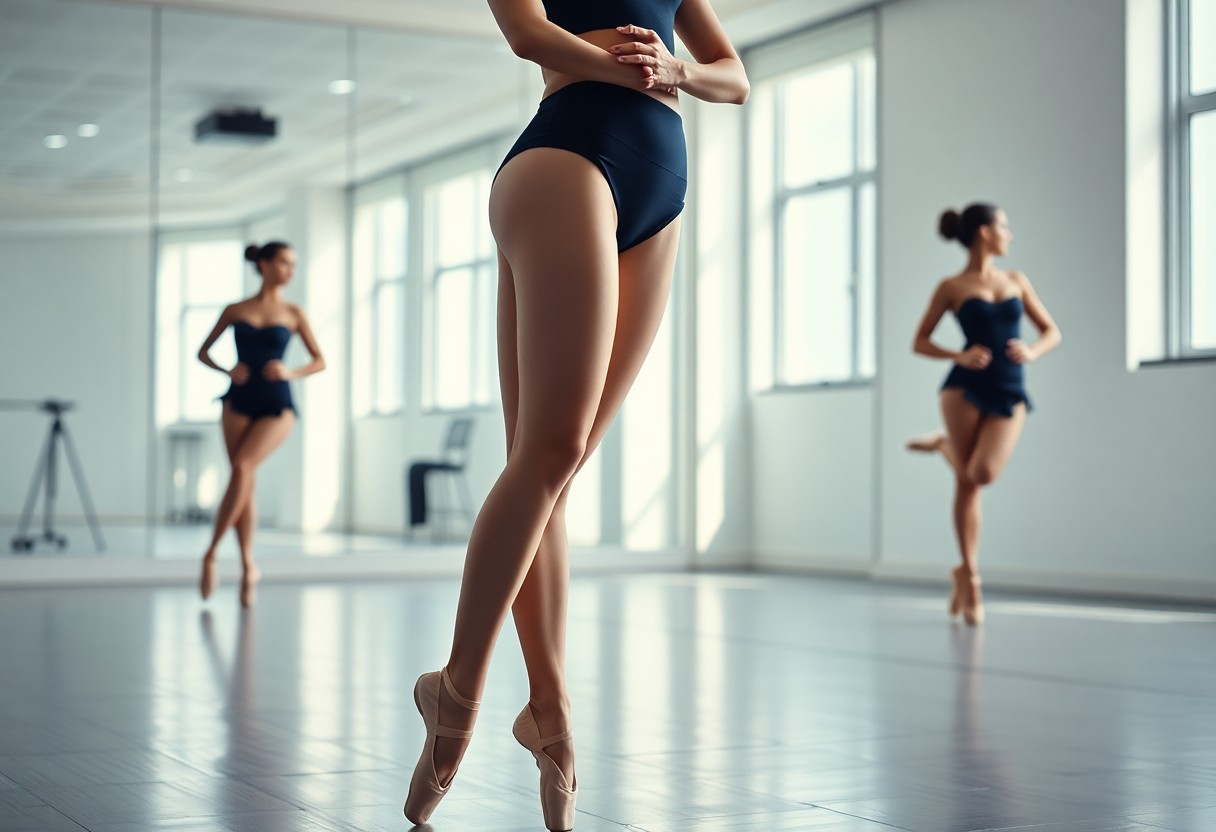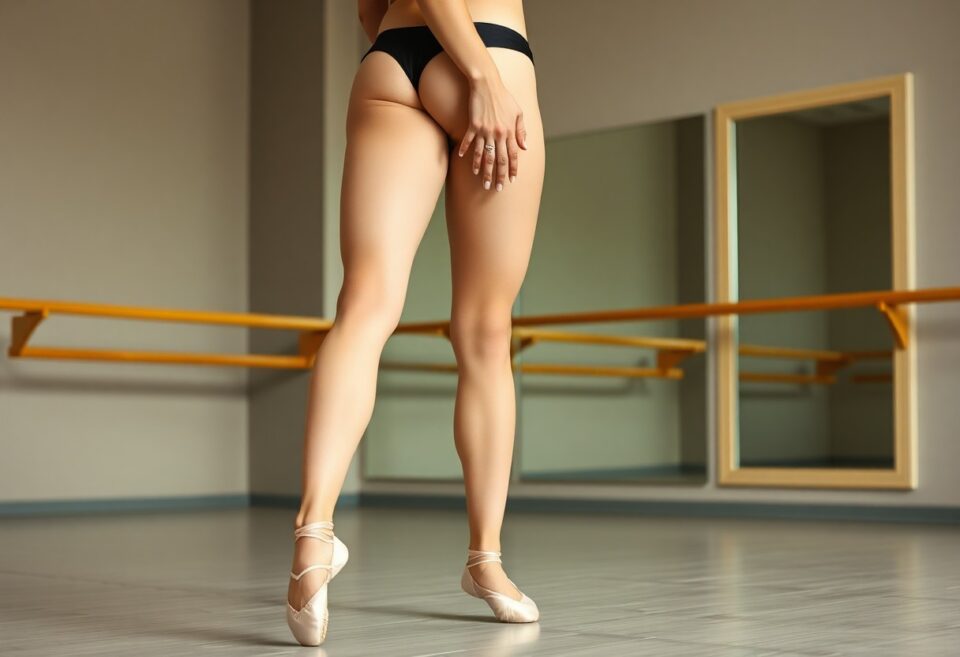There’s a graceful yet powerful way to sculpt your inner thighs using ballet-inspired moves that combine strength, flexibility, and control. By incorporating these targeted exercises into your routine, you’ll engage muscles you might not typically activate, leading to toned, leaner legs. This guide will walk you through effective ballet techniques designed to enhance your workout, improve your posture, and elevate your overall fitness. With consistent practice, you’ll notice significant improvements in your inner thigh strength and shape, all while moving with the elegance ballet is renowned for.

The Power of Ballet Techniques
How Ballet Shapes Muscles
Ballet techniques engage your muscles in ways that build both strength and grace. Movements like pliés and relevés activate the inner thigh muscles by requiring controlled, precise motion against resistance. This constant tension enhances muscular endurance, allowing your inner thighs to tone and define without excessive bulk. The emphasis on alignment and posture ensures you’re using the correct muscles efficiently, which further sculpts your legs with long, lean lines rather than short, bulky muscle.
Repetition of ballet steps challenges fast-twitch and slow-twitch muscle fibers, leading to increased stamina and muscle tone. Your inner thighs benefit especially from the turnout position, where external rotation of the hips isolates and lengthens the adductor muscles. Incorporating these movements into your workout helps create a balanced muscle structure that supports joint health and flexibility, minimizing the risk of injury during other exercises.
The Unique Benefits of Ballet for Toning
Ballet combines strength training with flexibility in a way that uniquely enhances muscle tone. Unlike traditional weightlifting or cardio exercises, ballet increases muscle control through isometric holds and dynamic stretches. Movements are designed to be low-impact yet highly effective, preventing joint strain while delivering continuous muscle engagement. This makes ballet-inspired workouts particularly suitable for toning sensitive areas like the inner thighs, which respond best to gradual, consistent loading.
Balance and coordination are also cultivated through ballet, which translates to improved functional strength. You develop better neuromuscular coordination, allowing your muscles to contract more efficiently during daily activities or other workouts. Ballet’s emphasis on precision means that your inner thigh tone isn’t just about size but also about the refinement of muscle quality, enhancing your overall physique with subtle yet noticeable definition.
Adding ballet-inspired movements to your routine gives you access to a blend of muscle activation, flexibility improvement, and postural refinement. Such training methods have been shown in studies to improve muscle tone by increasing slow-twitch fiber endurance while reducing fatigue. These unique attributes make ballet a holistic approach to toning your inner thighs, blending aesthetics with functional strength.
Core Ballet Moves to Target Inner Thighs
To effectively target your inner thighs, incorporating core ballet moves into your workout allows you to engage those muscles with precision and grace. These movements focus on alignment, muscle control, and balance, which not only tones but also improves your overall lower body strength. You’ll notice that mastering these foundational moves also enhances your posture and flexibility.
For a structured routine, consider exploring This Home Ballet Workout Strengthens Your Inner Thighs, which offers a variety of targeted exercises designed to sculpt and empower your legs. Integrating these core ballet movements into your regimen can elevate your fitness and bring a graceful fluidity to your workouts.
Plies: The Foundation of Ballet Strength
Plies serve as the cornerstone of many ballet sequences and are fundamental for developing inner thigh strength. As you bend your knees steadily while keeping your heels grounded, your adductor muscles engage fully. Whether performing small demi-plies or deep grand plies, you create controlled tension throughout the inner thigh, enhancing muscle tone and endurance over time.
Integrate slow, deliberate plies into your routine for optimal results. Focusing on perfect form—keeping your knees aligned over your toes and your back straight—builds not only strength but muscle awareness, which is key to avoiding injury and improving performance. The slow descent and ascent in plies offer resistance that activates deep muscle fibers in your thighs.
Grand Battements: Unleashing Inner Range
Grand battements are dynamic, high kicks that powerfully stretch and strengthen your inner thigh muscles. As you lift your leg straight up with controlled force, the adductors work to stabilize and support the motion, thereby intensifying the workout for these key muscle groups. Executing grand battements with proper alignment challenges the hip flexors and inner thighs simultaneously.
By focusing on height and control, you amplify muscle engagement along the inner thigh line. This move not only improves strength but expands your range of motion—critical for flexibility and injury prevention. Performing sets on both sides promotes balanced muscle development, which is necessary when aiming for toned, symmetric legs.
Diving deeper, grand battements also enhance neuromuscular coordination. This means your brain and muscles learn to work better together during complex movements, translating into improved balance and power in daily activities or other forms of exercise.
Adagio: The Balance of Strength and Flexibility
Adagio combines slow, sustained movements with balance holds, placing unique demands on your inner thighs. When you perform slow extensions and hold poses that require midline control, the adductor muscles contract isometrically. This kind of tension builds not only strength but also endurance in the inner thigh muscles, promoting longer-lasting stability.
Integrating adagio sequences challenges your proprioception and muscular control simultaneously, upping your ability to maintain posture during other workouts or activities. The fluid transitions within adagio rituals allow you to sustain inner thigh activation across various planes of motion, resulting in improved muscle tone and flexibility in tandem.
More than just a strength builder, adagio enhances muscular balance by encouraging symmetrical activation of your inner thigh muscles, which contributes to reducing muscle imbalances and improving overall leg functionality.
Integrating Ballet Into Your Fitness Routine
Creating a Versatile Workout Plan
Your workout plan gains a new dimension by blending ballet-inspired moves targeted at toning the inner thighs with other forms of exercise. Combining pliés, tendus, and relevés with strength training or cardio intervals can create a balanced schedule that both sculpts muscles and boosts endurance. For example, you might start your session with a dynamic warm-up, then flow through a series of ballet leg lifts and pliés that emphasize inner thigh engagement, followed by compound lower-body exercises like lunges or squats to build overall power. This integration keeps your routine interesting and maximizes muscle activation.
Consider dividing your week into focused days where ballet-based toning takes center stage, alternating with days dedicated to higher-intensity workouts or flexibility training. Such variation improves recovery and prevents overuse injuries while ensuring consistent progress. Tracking your performance—like the number of pliés you hold or how deep your tendus become over time—adds measurable goals that push you forward. This thoughtful blend creates both challenge and balance in your fitness journey.
Incorporating Dance Elements for Maximum Effect
Dance elements extend beyond movement mechanics to include rhythm, posture, and breath control, all pivotal in enhancing your inner thigh toning exercises. Executing leaps and extension work on counts aligned with music encourages smoother transitions and better muscle coordination. Breathing deeply into each movement not only elevates your stamina but also aids in engaging the adductor muscles more effectively. You might experiment with barre work that incorporates slow, deliberate arm movements paired with strong inner thigh contractions, creating a full-body approach rooted in classical technique.
Adding dance-focused cues such as maintaining a lifted chest, engaged core, and turnout from the hips influences alignment and muscle recruitment, translating directly to more effective inner thigh toning. Embracing these elements demands mindful attention during your workouts, promoting improved body awareness and control. This holistic approach transforms routine exercises into graceful, yet powerful, movement sequences.
Further embracing dance components like musicality not only makes your workouts more enjoyable but also heightens neuromuscular engagement. Studies in dance therapy suggest that syncopating movements to varied rhythms enhances motor learning, which in your case can refine the precision of inner thigh activations. Incorporating improvisational moments during your routine invites creativity, keeping your practice fresh and maintaining motivation over time.

Common Pitfalls in Ballet-Inspired Training
Misalignment: Why Form Matters
Maintaining proper alignment is the foundation of effective ballet-inspired training. If your knees extend beyond the toes during pliés or if your hips are not square, you increase the risk of strain on your joints and muscles, particularly in the inner thigh region. This not only inhibits muscle engagement but also sets the stage for injuries like IT band syndrome or patellar tendinitis. Practicing in front of a mirror or recording your movements can help you catch misalignments that are otherwise difficult to feel.
Another common misalignment occurs when the lower back arches excessively during tendus or relevés. This shifts the workload away from the inner thighs and places undue pressure on the lumbar spine, limiting the toning benefits and causing discomfort. Focusing on engaging your core and lengthening through the spine anchors your pelvis correctly, allowing the targeted muscles to activate more efficiently. For guided routines that emphasize correct form and alignment, you might find Nancy: Ballet Inner Thighs particularly helpful.
Overtraining: The Risks of Underestimating Ballet
Ballet-inspired workouts often look graceful, but they demand significant muscular endurance and control. Overdoing sessions without adequate recovery can lead to overuse injuries such as tendinopathy in the adductor muscles and chronic tightness that impairs flexibility. Even subtle moves repeated hundreds of times place cumulative stress, and failing to listen to your body’s fatigue signals risks setting progress back.
While low-impact, these exercises recruit stabilizing muscles often neglected in general workouts, which means your inner thighs and hips can become sore and inflamed if pushed too hard too fast. Balancing intensity with rest days and varying your routine to include complementary stretches and strength training can mitigate these risks effectively.
If you want a program that respects your body’s limits while maximizing toning, consider structured plans like Nancy: Ballet Inner Thighs to find a balanced approach to training intensity and recovery.

Personal Stories: Transformations Through Ballet
Many practitioners find that incorporating ballet-inspired moves into their fitness routines leads to noticeable transformations not only in physical appearance but also in posture and muscle tone. For example, Laura, a 34-year-old graphic designer, saw a significant reduction in inner thigh fat after committing to a thrice-weekly ballet barre workout for just eight weeks. She credits the combination of pliés and rond de jambe exercises for the increased muscle definition and improved balance she experiences during her daily activities.
Similarly, Mark, a fitness enthusiast who struggled with tight hips and weak thigh muscles, discovered that blending ballet exercises with his regular regimen enhanced his range of motion and muscular endurance. After adapting ballet-inspired moves, he noticed his inner thighs felt stronger and more resilient during running sessions, demonstrating how ballet techniques can complement traditional workouts for overall functional strength.
Interviews with Practitioners
In conversations with ballet instructors and enthusiasts, a common theme emerges: the precision and control required by ballet fosters a deeper awareness of muscular engagement, particularly in the inner thighs. Sophia, a professional ballet dancer with over a decade of experience, highlights how exercises such as the plié not only sculpt the thighs but also promote alignment and prevent injury. She emphasizes that the slow, controlled movements help target the inner thigh muscles more effectively than many high-impact exercises.
Another practitioner, Jeremy, who transitioned from high-intensity interval training to ballet-inspired workouts, shares how his strength training took on a new dimension. Through barre classes, he learned to isolate and engage his adductor muscles, leading to a toned, more symmetrical lower body. His insight underscores how ballet moves uniquely contribute to muscle precision and endurance compared to conventional gym workouts.
Testimonials on Mind-Body Connection
The interplay between mind and body in ballet-based exercise frequently emerges in testimonials, with many practitioners noting a heightened sense of body awareness. Claire, a yoga instructor, points out that the deliberate pacing and focus on breath during ballet-inspired moves cultivate a meditative quality that enhances muscle engagement. This heightened connection helps activate the inner thighs more fully, translating to better toning and muscle control over time.
For those who struggle with motivation or consistency, ballet’s elegance and focus on form offer a refreshing alternative to monotonous workouts. Testimonies often reference the calming, mindful nature of ballet-inspired routines, which encourages sustained practice leading to lasting changes in both physique and mental well-being. The rhythmic flow and emphasis on controlled movements work together to develop strength while fostering relaxation and confidence.
The emphasis on deliberate movement and breath control in ballet activities provides more than physical benefits; it invites you into a holistic experience where the mind intimately guides your muscles. This alignment strengthens your inner thighs not just through repetition but through a conscious engagement that improves posture, balance, and overall muscle tone. As testimonials reveal, this mind-body connection transforms training into a practice that’s as mentally enriching as it is physically effective.
Conclusion
Taking this into account, incorporating ballet-inspired moves into your workout routine offers a highly effective way to tone your inner thighs. These exercises not only target the muscles in a precise and controlled manner but also improve your balance, flexibility, and overall body awareness. By consistently practicing these movements, you will notice a strengthened core and more defined inner thigh muscles, contributing to enhanced physical performance and posture.
As you continue to embrace these ballet techniques, you’ll find that the graceful, low-impact nature of the exercises makes them accessible for all fitness levels while delivering impressive results. Supporting your fitness journey with proper form and mindful engagement ensures that you maximize the benefits and reduce the risk of injury. Ultimately, adopting ballet-inspired moves can transform your approach to toning your inner thighs, empowering you to achieve a leaner, more sculpted silhouette.
FAQ
Q: What makes ballet-inspired moves effective for toning inner thighs?
A: Ballet-inspired moves are effective because they combine controlled movements with precise muscle engagement. These exercises often require balance, flexibility, and strength, which target the inner thigh muscles (adductors) more intensely than many traditional workouts.
Q: How often should I perform ballet-inspired inner thigh exercises to see results?
A: To see noticeable toning and strengthening of the inner thighs, it’s recommended to perform these exercises at least 3 to 4 times per week. Consistency paired with proper form enhances muscle definition and endurance.
Q: Can beginners safely perform ballet-inspired inner thigh moves without prior dance experience?
A: Yes, beginners can safely perform these moves by starting with basic exercises and gradually increasing intensity. It’s important to focus on proper alignment, controlled breathing, and taking breaks to avoid injury. Consulting beginner tutorials or a fitness professional can help ensure safety.
Q: What are some key ballet moves that specifically target the inner thighs?
A: Key ballet moves for toning inner thighs include pliés (deep knee bends), battements (leg lifts and extensions), and fondues (slow bend and straighten). Each movement emphasizes the adductor muscles through stretching and strengthening.
Q: Should ballet-inspired inner thigh exercises be combined with other forms of exercise?
A: Combining ballet-inspired exercises with cardio and overall strength training can enhance overall fitness. Cardio helps reduce fat covering muscles, making toning more visible, while strength training supports muscular balance throughout the body.
Q: How can I modify ballet-inspired moves if I have limited flexibility?
A: If flexibility is limited, start with modified versions such as shallower pliés or reduced leg lifts. Using support like a chair or barre can aid balance and control. Over time, flexibility can improve with gentle stretching and consistent practice.
Q: Are there any common mistakes to avoid when doing ballet-inspired inner thigh exercises?
A: Common mistakes include improper knee alignment (knees caving inward), rushing through movements without control, and holding breath. Maintaining proper posture, moving slowly with intention, and breathing steadily help maximize benefits and reduce injury risk.
